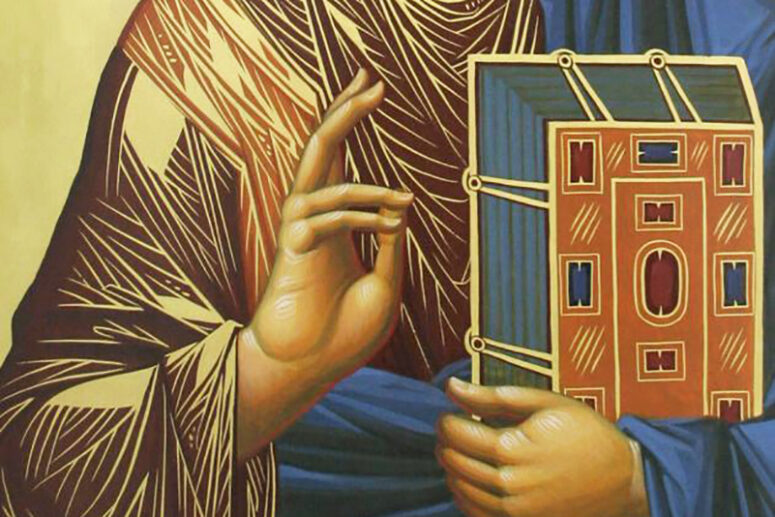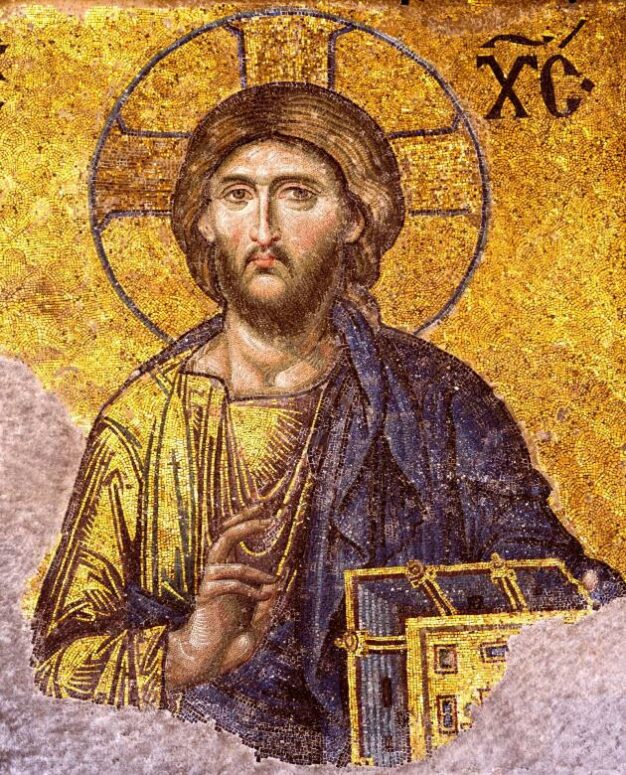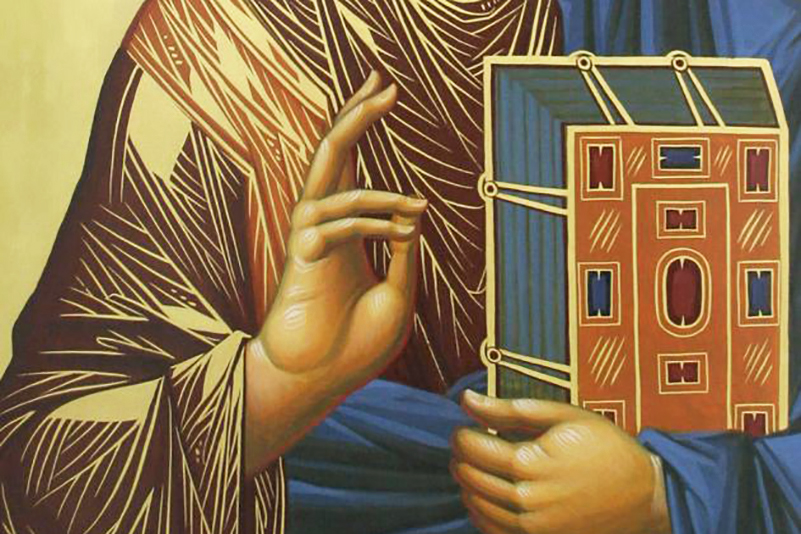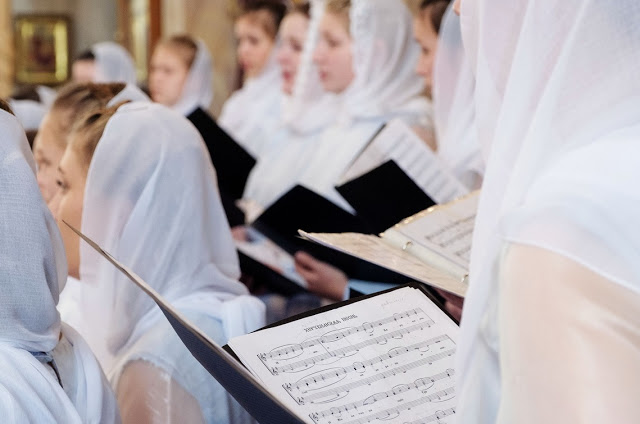
The most common gesture that we see depicted on icons is believed to signify the “blessing”. Do we understand this gesture correctly?
Let us look at the majority of the ancient icons of Christ and notice the gesture of His right hand most commonly depicted by ancient icon painters? As a rule, the index, middle and thumb fingers are raised, while the little and ring fingers are bent. There are also versions where the thumb and ring fingers are joined together, and the rest are raised. If you ask most people what this gesture means, most likely the answer will be, “A blessing”.
Browse hand-painted icon of Christ Enthroned in the catalog >>
Indeed, it has been perceived in this way from about the 16th century. At one time, this (Christ blessing with just two fingers) became one of the arguments in the Old Believer dispute. This is why, starting from the 17th century, the Savior began to be depicted with His fingers brought together in the same way as priests do when they bless the congregation (the so-called Stavros blessing, where each finger signifies a letter constituting the monogram of the name of Jesus Christ — IC XC).
However, if we look at some more ancient images (not only Christian) of the Late Antique era, we will see that such a gesture is used in cases where it would be difficult to consider it a “blessing”.
On the mosaic created by Byzantine artisans in the Sicilian Duomo di Monreale (12th century), which depicts the temptation of Christ in the desert, we see Christ turn the “blessing” gesture towards Satan — strange, isn’t it?

Six centuries earlier, one of the miniatures in the 6th century Syrian manuscript of the Gospel, known as the Rabula Gospels, depicts the trial of Pontius Pilate. The Jews stretch out their hands to Pilate, whereas one of them folds his fingers in the same “blessing” gesture.

Let us also look at a completely non-Christian plot of the same era: an illustrated manuscript of Homer’s Iliad where we meet exactly the same gestures on the miniature images of the characters.

How is this to be understood?
It is worth recalling at this point that Christian culture in general and Christian iconography in particular did not arise from nothing. They are in fact a creative reworking of previous cultures, especially the Hellenistic ancient culture. The gesture in question has been borrowed from the ancient oratorical tradition.
Greek and Roman speakers had their own set of gestures with which they accompanied their speeches. The Roman rhetorician Marcus Fabius Quintilianus writes in exquisite detail about such gestures in his book titled Instructions to the Orator, which also mentions the common gesture that we are now discussing:
“The thumb, ring and little fingers are drawn in, with the index and middle fingers extended.”

There is one more version of it, which we also see on icons:
“The ring finger is bent under the thumb, the rest are stretched forward. This gesture is typical for the beginning of a speech, as well as for narration, censure or accusation.”

In other words, this gesture on the icons originally meant that the character was speaking. This is also evidenced by a Christian author, the 6th century Byzantine historian Paulus Silentiarius. As he describes Hagia Sophia of Constantinople, he mentions the altar curtain, where there was an image of the Savior, depicted “stretching the fingers of his right hand, as he proclaims the ever-living word.”
To this end, the “blessing” gesture of the Savior on ancient icons should be understood as the preaching of the Gospel. Similarly, the gesture of the Archangel Gabriel, for example, in the scene of the Annunciation does not mean the blessing of the Holy Virgin, but the good news in the truest sense of the word.
Translated by The Catalogue of Good Deeds





Very interesting, thank you. I didn’t know this before.
Thank you for your insight, I love this art. Can’t get enough of it.